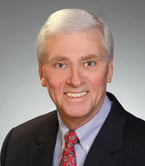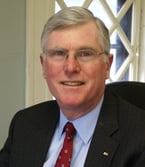
Transformative investments of millions of dollars are reshaping private club campuses everywhere, and “What’s this going to cost?” is a question often raised in member forums and club board meetings. Club leaders need to put in the work and be prepared with fact-based answers. It is never as rosy as some wish to think and General Managers and Board Members that recently contacted Club Benchmarking — not as confident in their responses as they feel they should be — want professional assistance in fulfilling their obligations.
Members deserve to know what the capital investment is going to cost in terms of annual dues, special assessments, and capital and debt service fees over the long haul. Club leaders need to take a comprehensive, long-term view in fully addressing the issue. Clubs that offer professional validation of funding plans as a selling point of transformative investments protect club leaders from criticism and increase the likelihood of success.
Operating Costs
Operating costs will increase (often by as much as $25 per square foot added) and labor will increase as F&B venues and other amenities expand in size and breadth. Incremental revenues will not cover these costs. Dues and amenity subsidies will need to increase. Transformative investments are all about membership satisfaction, maintaining relevancy and attracting new members. Those that believe leveraging their operating model by seeking a greater percentage of non-dues revenues are severely handicapping the future of their clubs. Understand that a transformed campus will cost members more. Club leaders must make the new experience worth it and be careful not to underestimate the costs amid enthusiasm for the project(s).
Capital Costs
The initial and ongoing capital costs of transformative investments must be carefully funded. There is no substitute for membership contributions. While there’s been a trend of greater reliance on debt – from average debt per member of 18% of revenues in 2013 to 37% in 2020 – results have been mixed. Clubs that use debt to spread increased member contributions over a short number of years tend to do well. Clubs that attempt to substitute debt for additional membership contributions or utilize long amortization periods to minimize member contributions predictably start a persistent negative trend.
Club leaders must understand one of their primary responsibilities is to ensure the long-term financial vitality of the club. Strengthening balance sheets is critical to success. This is best measured by an increasing net worth over time. Projections of net worth are a critical component of transformative investment planning. Without equivocation, clubs with declining net worth projections will be ill-prepared to maintain and expand their campus assets in the future. Net-to-Gross Property Plant & Equipment (PPE) ratios will fall. Financial vitality will be compromised.
Capital collections must exceed future depreciation and debt service costs for net worth to grow. Depreciation is the major consumer of net worth and must be funded. Too many boards challenge this reality with theories of their own, but the math and its predictive capability is unyielding. As the industry has shifted focus to balance sheets over the past decade, depreciation has gone from a forgotten non-cash expense to one of the most important funding considerations. That’s a fact-based reality for clubs positioning for long term success.
Other Factors Impacting Long-Term Financial Viability
While the amount of debt is a primary concern, long amortization periods are of greater concern. Amortization periods of more than 7-10 years will limit the flexibility of future administrations. Clubs that do not make transformative investments every 7-10 years will become stale and increasingly less relevant. Balloon payments are not the answer and compound future problems. There are many more issues relating to the use of debt in club settings that need to be considered.
It is also important for club leaders to note that member satisfaction usually increases after transformative investment and may result in decreased attrition for the next several years. As a result, initiation fee income may slow for clubs at or near a membership cap. Be conservative in your assumptions if initiation or transfer fees are critical to your funding plan.
Doing Your Job – Ensuring Financial Vitality
We encourage club leaders to seek professional guidance and prepare an integrated long-term financial plan. It should be updated at least annually as part of data-driven budgeting process and incorporate the following for the next 5-10 years:
- Results from operations
- On-going capital expenditures
- Implementing strategic and/or master plans
- Funding revised depreciation
- Principal & interest payments on debt
- Payments on capital leases
- Refunding membership bonds/certificates
- Funding unfunded pension liabilities
- Net worth growth projections
We can help with plan development and validation. To discuss your club's current situation and learn more about how we might assist you, contact Joe Abely at jabely@clubbenchmarking.com or 781-953-9333 or Dave Duval at dduval@clubbenchmarking.com or 617-519-6281.
About The Authors Dave Duval is a member of Charles River Country Club, The Quechee Club, Turtle Creek Club and Portmarnock Golf Club. He served on the board of Charles River Country Club for eight years, including six as Treasurer, before joining the board of The Quechee Club. He served on The Quechee Club board for four years including two as President & CEO. During the course of his club board experiences, Dave architected the long-term funding plans and finances for more than $20 million of capital improvements. He also oversaw multiple membership surveys and governance improvements while communicating frequently about board activities and membership satisfaction. Dave’s professional experience includes public accounting, C-suite management and 20 years as a partner in venture capital partnerships. He is a CPA (retired) and holds a BS in Accounting from Bentley University and an MBA from Babson College. Dave has served on numerous corporate, association and charitable organization boards.
Dave Duval is a member of Charles River Country Club, The Quechee Club, Turtle Creek Club and Portmarnock Golf Club. He served on the board of Charles River Country Club for eight years, including six as Treasurer, before joining the board of The Quechee Club. He served on The Quechee Club board for four years including two as President & CEO. During the course of his club board experiences, Dave architected the long-term funding plans and finances for more than $20 million of capital improvements. He also oversaw multiple membership surveys and governance improvements while communicating frequently about board activities and membership satisfaction. Dave’s professional experience includes public accounting, C-suite management and 20 years as a partner in venture capital partnerships. He is a CPA (retired) and holds a BS in Accounting from Bentley University and an MBA from Babson College. Dave has served on numerous corporate, association and charitable organization boards.
 Joe Abely is a member of Brae Burn Country Club and The Wianno Club. During his twelve years of board service at Brae Burn he served as Treasurer for six years and President for three. He continues to chair the nominating committee there. Joe also architected the long-term funding plans and finances for more than $20 million of capital improvements during his tenure and prioritized membership satisfaction and communications. In addition to serving on many corporate and tax-exempt organization boards, Joe’s career accomplishments include partnership in a Big 4 CPA firm, CFO/COO/CEO of a publicly traded company and serving as Executive Director of a large charitable organization. He is a graduate of Boston College and holds an MBA from The Wharton School of the University of Pennsylvania.
Joe Abely is a member of Brae Burn Country Club and The Wianno Club. During his twelve years of board service at Brae Burn he served as Treasurer for six years and President for three. He continues to chair the nominating committee there. Joe also architected the long-term funding plans and finances for more than $20 million of capital improvements during his tenure and prioritized membership satisfaction and communications. In addition to serving on many corporate and tax-exempt organization boards, Joe’s career accomplishments include partnership in a Big 4 CPA firm, CFO/COO/CEO of a publicly traded company and serving as Executive Director of a large charitable organization. He is a graduate of Boston College and holds an MBA from The Wharton School of the University of Pennsylvania.
.png?width=200&height=58&name=MicrosoftTeams-image%20(8).png)
.png)
-1.png)
-1.png)

